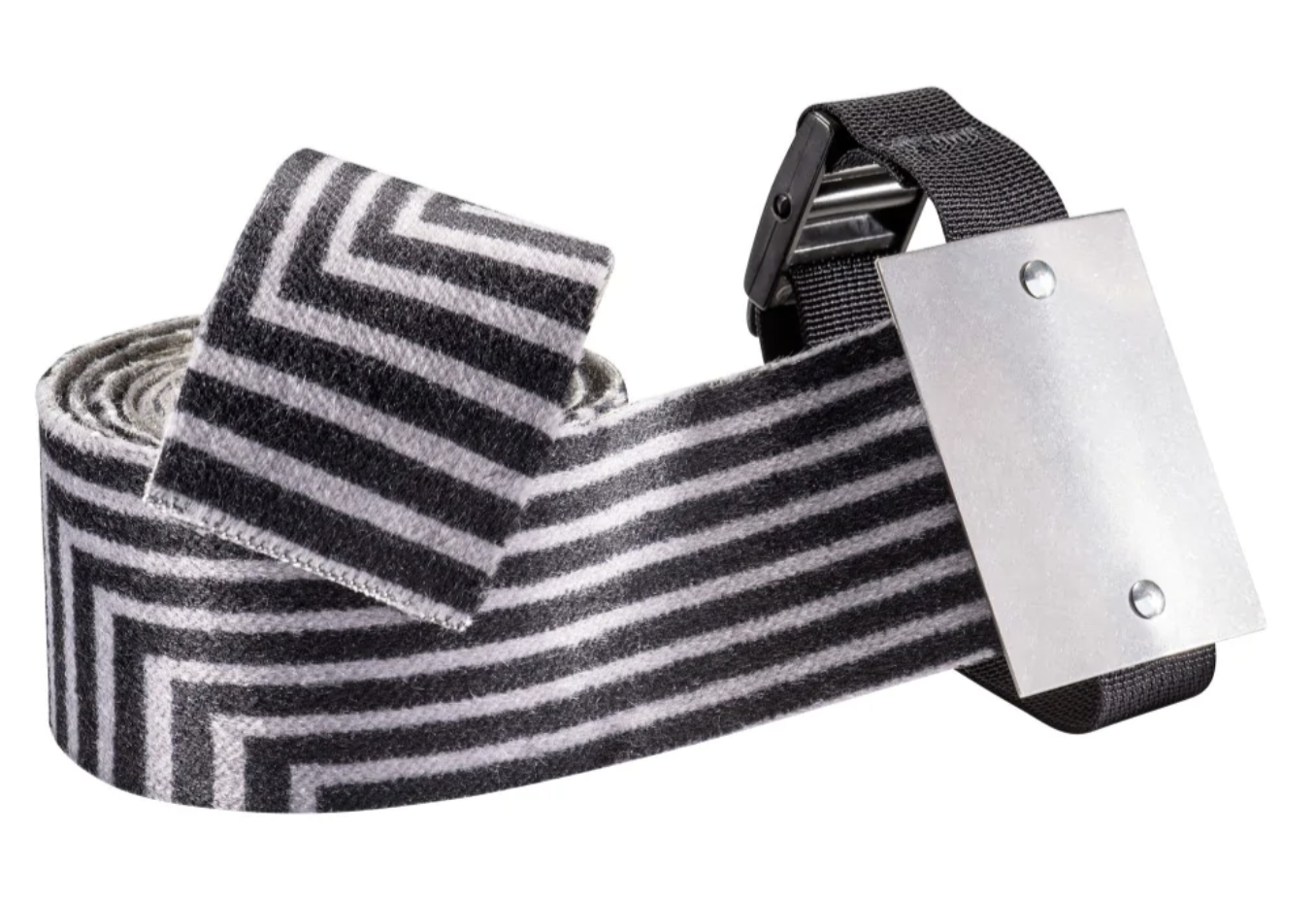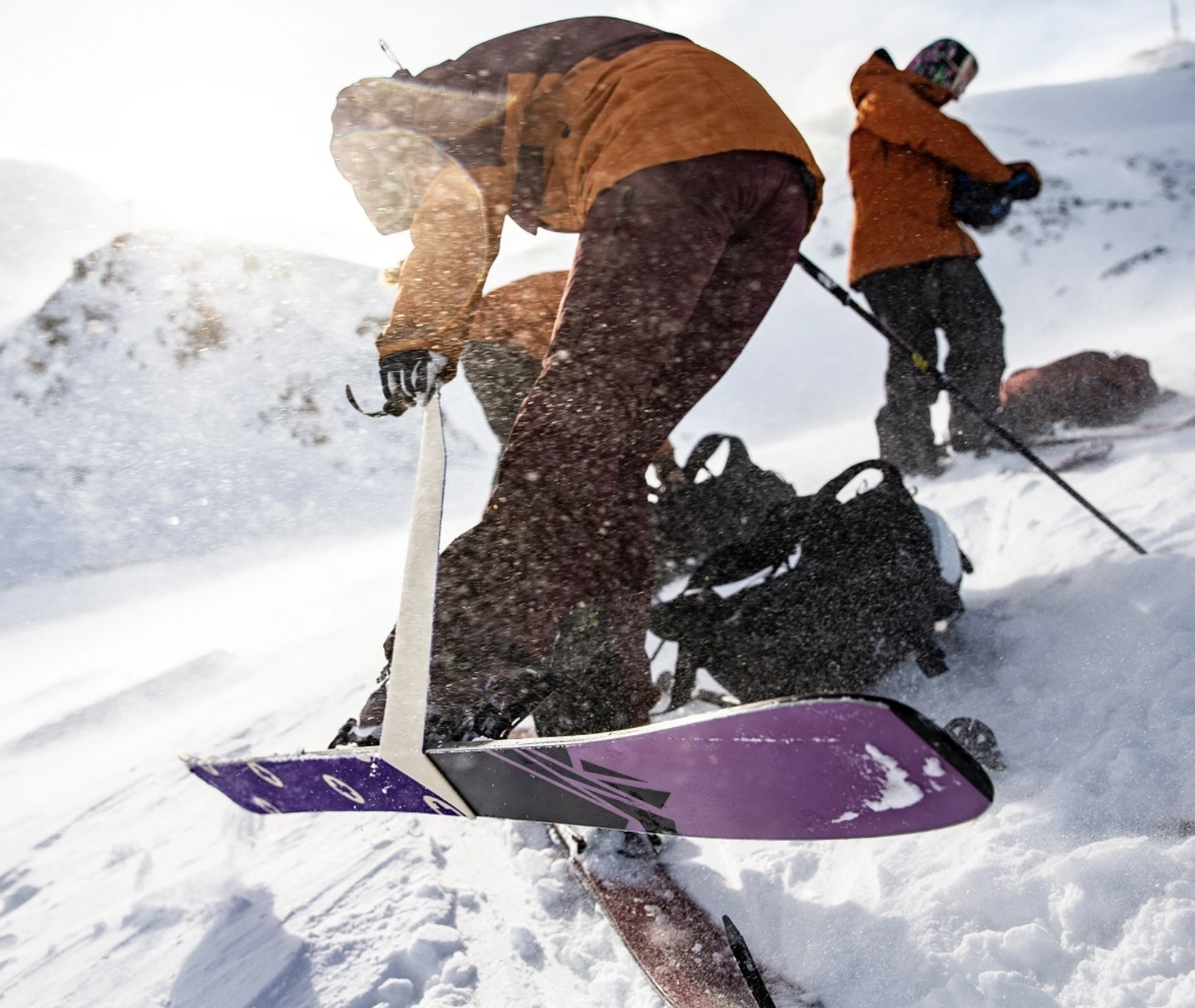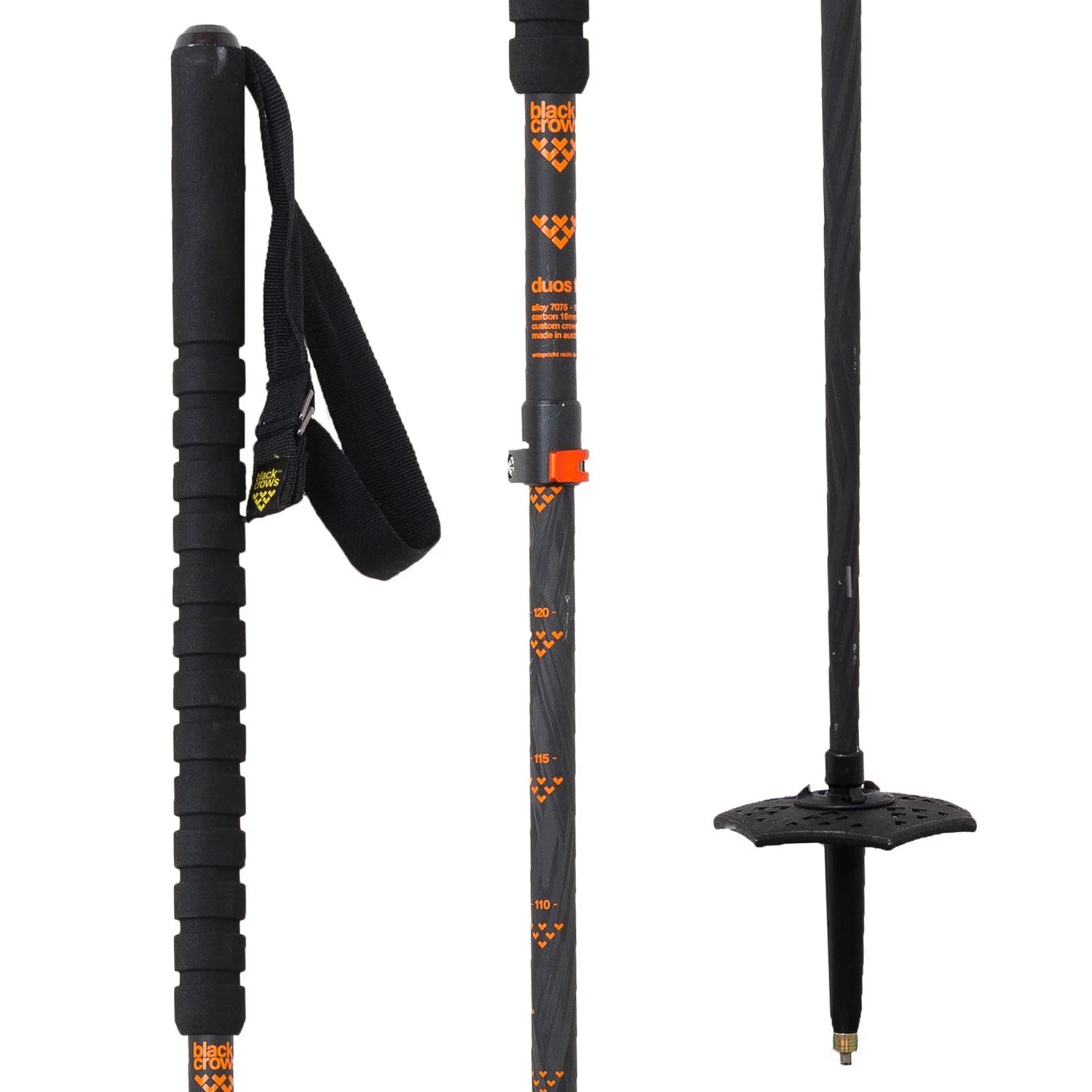Skins, Waxing and Poles
Skins
True ski/split touring starts with skins. The uphill mode using skins is really what sets Alpine Touring / Backcountry / Spliboarding… or whatever else you call this, apart from the often confused counterpart ‘Cross Country’ disciplines.
Full length skins are essential equipment for travel on slope angles beyond 10˚, regardless of the various set-ups mentioned here. There's a plethora of instructions on how to fit them, plus more on how to maintain them so we need not go into that here. In an emergency I have found when the glue side loses its tack, a clean pot with boiling water used like an iron to smooth over a delaminating section of just plain old tired glue as a ‘rough renew’ works (used on G3 to good effect, cant speak for other brands). Try it if you are in a jam. Basics, keep them as dry as you can, don’t drop them obviously on dust or grass. Standard stuff. If you have a party member on pattern base skis, check they also have skins as most of the tours in this guide will require them.
‘Kicker’ skins are a handy addition for a lot of the terrain here in this guide where it is undulating, just like pattern base skis with the option to ‘kick’ them off.
Kicker Skins are a handy half way option for Australias renown ‘undulating terrain’, as an alternative to pattern base skis or full skins when the traction is easy. Also locally available
Full length Skins: These fancy new-gen skins have a fish scale heavy duty front end. Locally Available
Solomon.com has a pretty handy cover all section on ski/split skins. Check it here
Waxing
Until you have your system for touring down, waxing is not really a thing. Often having a pretty ‘dry base’ helps side step and general stability when having to navigate tricky terrain. Going fast isn't really the goal out here, remembering that falling is to be avoided. The squeegee bottle polycarbonate wax is popular for particular instances when the snow is really sticky, that said, pouring this petrochemical into the snow (which is what you are doing) is pretty bad environmentally.
Poles
Adjustable poles mostly break. Mostly all the time, or at least before they are retired, and that will usually happen on a tour which is bad for you, and your crew at some point. Do you carry a spare? Two piece adjustable poles are stronger than three. Seems like if they are not over extended they fail less.
Grip extending along from the stirrup to mid way is super handy on continuous switchbacks. A spare basket in the tool kit is a good idea. Whippets? Where an ice axe and a ski pole meet. Very handy in accompaniment with ski crampons for climbing to enable a selt arrest if it gets icy and dicey. But that said, carrying a sharp point around at head height when skiing isn't the safest practise. When the time comes, it will make sense when it’s in your hand. See below.
A Two piece pole has only one length adjustment. A long grip gives you options for positions on the move.
A whippet attachment turns a ski pole into a modified ice axe. Not a bad idea for when the surface conditions are unforgiving. Dangerous if not required… a tricky decision.





